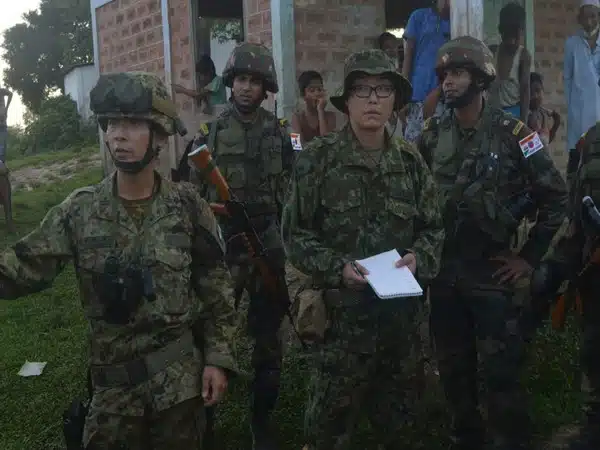Joint military exercise enhances India-Japan strategic partnership in the face of rising China’s aggression in the Indo-Pacific
India and Japan are holding their 5th joint military exercise, Dharma Guardian, involving infantry troops from each side, in a bid to enhance their defense cooperation and promote regional security and stability.
In response to China’s increasing military and economic influence in the region, India and Japan have been strengthening their defense ties. As part of this effort, the two countries are set to conduct a two-week-long joint military exercise focused on counterterrorism operations in urban environments in Japan. The exercise will include various tactical drills, such as live firing and joint maneuvers, and aims to enhance their strategic partnership and promote regional security and stability.
This year’s exercise marks the 5th edition since it began in 2018, and is one of several initiatives that the two countries have undertaken to deepen their relationship.
The exercise will take place over the course of two weeks and will involve a series of tactical drills, including live firing and joint maneuvers. The troops will also exchange best practices and techniques for handling various situations, including those related to disaster management and humanitarian assistance.

The joint military exercise between India and Japan is just one of several initiatives aimed at enhancing defense cooperation between the two countries. India and Japan have also implemented the Acquisition and Cross-Servicing Agreement (ACSA), which allows for the sharing of military logistics and supplies, as well as joint technology transfers and procurement initiatives.
India and Japan have been strengthening their defense ties as part of broader efforts to promote a free and open Indo-Pacific. With China’s growing military and economic influence in the region, India and Japan have become important partners in maintaining regional security and stability.
The joint military exercise between India and Japan is expected to further enhance the interoperability and operational coordination between the two armies, as well as contribute to greater strategic autonomy and flexibility.

Apart from the joint military exercise, the two nations have taken several measures to counter China’s growing influence in the Indian Ocean Region (IOR) and the South China Sea (SCS).
One of the major initiatives has been the Quadrilateral Security Dialogue or the Quad, which includes the United States and Australia along with India and Japan. The Quad is seen as a grouping aimed at countering China’s aggressive military and economic behavior in the region. In 2021, the Quad held its first-ever in-person summit in Washington, DC, where the leaders of the four countries discussed issues related to China, the COVID-19 pandemic, and climate change.
Apart from the Quad, India, and Japan have also been working on various infrastructure projects in the Indo-Pacific region, with a focus on enhancing connectivity and promoting economic development. The Asia-Africa Growth Corridor (AAGC), launched in 2017, is one such initiative that aims to boost economic cooperation between the two continents. The project involves the development of sea and land routes connecting Asia with Africa and is seen as a counter to China’s Belt and Road Initiative (BRI), which has been criticized for imposing unsustainable debt on participating countries.
In addition, India and Japan have been increasing their naval cooperation, with regular joint maritime exercises and port visits. Japan has also been supplying defense equipment to India, including the amphibious US-2i aircraft, which can be used for search and rescue operations, maritime surveillance, and other missions.
Overall, the India-Japan military alliance and its measures to curb Chinese influence in the IOR and SCS demonstrate their shared commitment to regional stability and their determination to counter China’s growing assertiveness.













